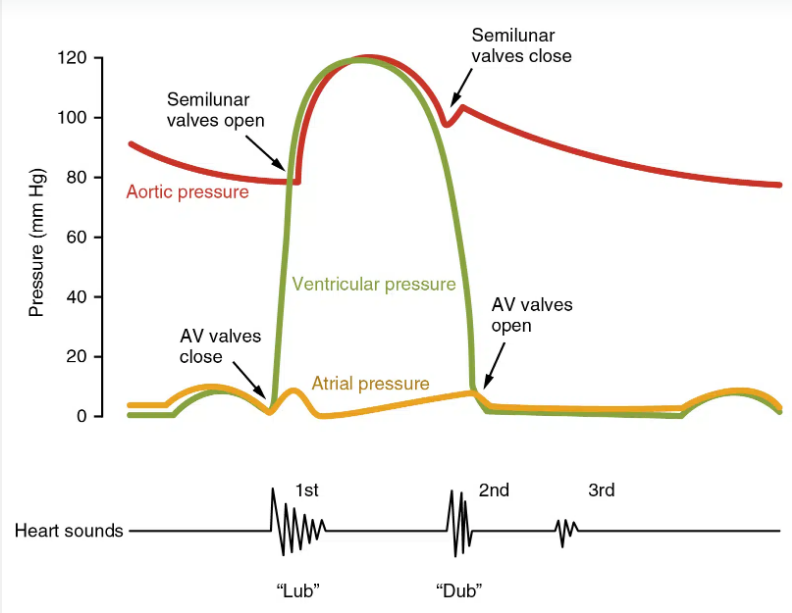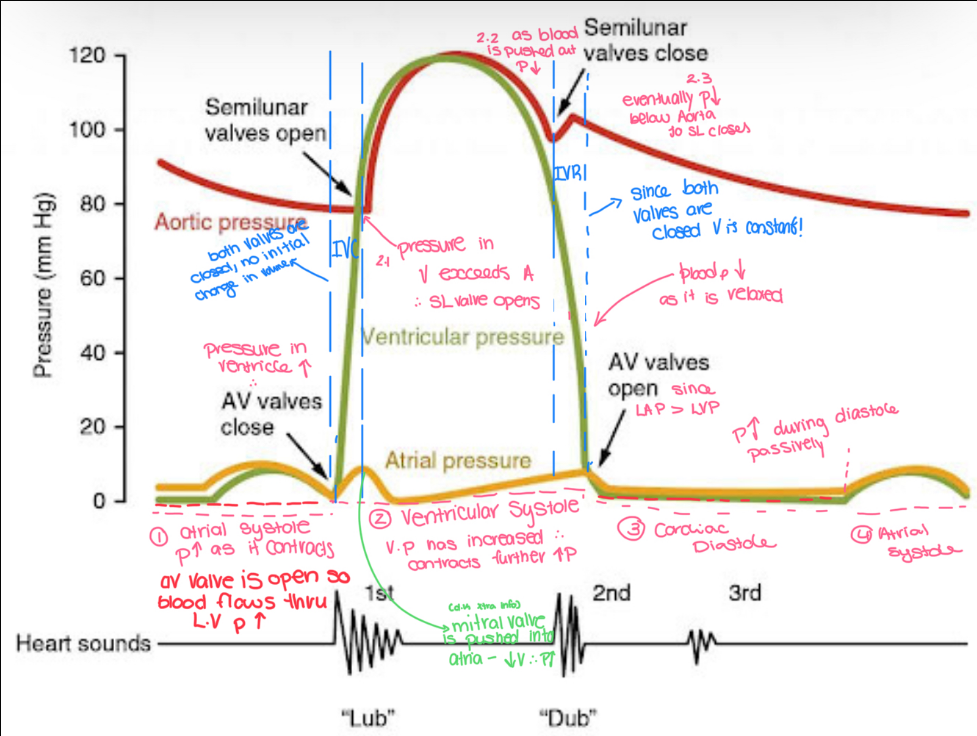The Cardiac Cycle
1/7
There's no tags or description
Looks like no tags are added yet.
Name | Mastery | Learn | Test | Matching | Spaced |
|---|
No study sessions yet.
8 Terms
Define the Cardiac Cycle
the sequence of events from the start of one heartbeat to the start of the following heart beat
consists of one diastole and one systole
Brief Description of Cardia Cycle
Cardiac Diastole; all chambers are relaxed and blood pools into the atria
Atrial Systole: atria contract and push blood to the ventricles
Ventricular Systole: ventricles contract and push and force blood into the arteries
BLOOD ALWAYS MOVES FROM HIGH TO LOW PRESSURE
Function of Valves in the Cardiac Cycle
AV valves prevent backflow into atria when ventricles contract
Semilunar valves prevent backflow of blood into the ventricles when ventricles contract
valves prevent blood from moving back to low pressure areas, so when that chamber is of a higher pressure than the next it remains closed
Cardiac Diastole
all chambers are relaxed
blood pools into the atria at low pressure
as blood pools in pressure in atria increases so
av valves are open
semilunar valves are closed
blood begins to move through the av valves to the ventricle
Atrial Systole
atria contract pushing all the blood into the ventricles - contract when they are 50% full
pressure in ventricles increases
av valves shut (prevents backflow back to the low pressure atria)
semilunar valves remain closed
Ventricular Systole
av valves shut as pressure is higher in the ventricle
contraction starts from the apex of the heart and moves upward
causes pressure to increase sharply above that of the arteries
semilunar valves open and blood rushes into the arteries
AV VALVE IS STILL SHUT TO PREVENT BACKFLOW!!
semilunar valves close once ventricle has emptied and relaxed
Periodic Time of one Heartbeat
Atrial Diastole: 0.4s
Atrial Systole: 0.1s
Ventricular Systole: 0.3s

Pressure Graphs - DETAILED DESCRIPTION
